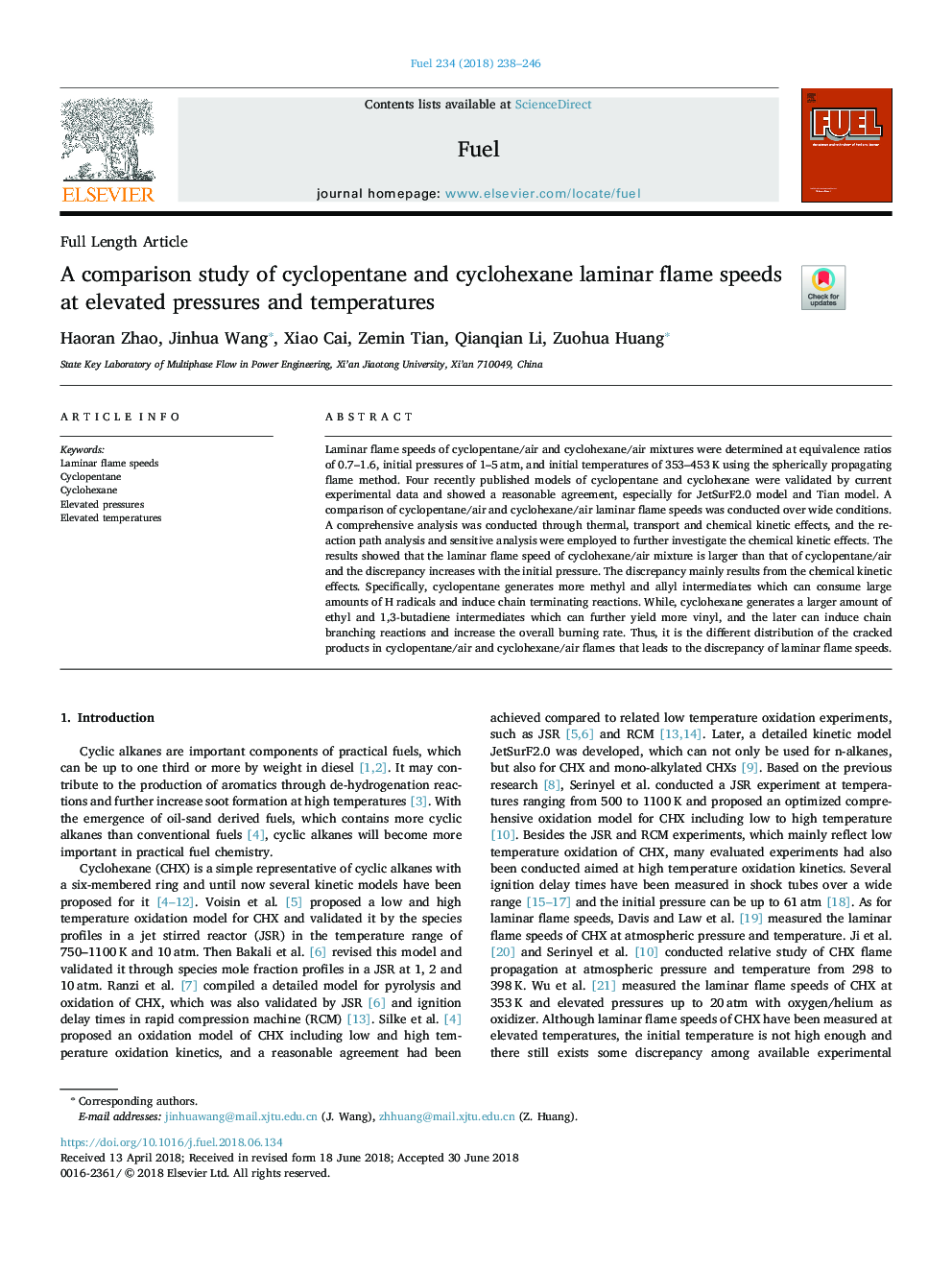| Article ID | Journal | Published Year | Pages | File Type |
|---|---|---|---|---|
| 6630011 | Fuel | 2018 | 9 Pages |
Abstract
Laminar flame speeds of cyclopentane/air and cyclohexane/air mixtures were determined at equivalence ratios of 0.7-1.6, initial pressures of 1-5â¯atm, and initial temperatures of 353-453â¯K using the spherically propagating flame method. Four recently published models of cyclopentane and cyclohexane were validated by current experimental data and showed a reasonable agreement, especially for JetSurF2.0 model and Tian model. A comparison of cyclopentane/air and cyclohexane/air laminar flame speeds was conducted over wide conditions. A comprehensive analysis was conducted through thermal, transport and chemical kinetic effects, and the reaction path analysis and sensitive analysis were employed to further investigate the chemical kinetic effects. The results showed that the laminar flame speed of cyclohexane/air mixture is larger than that of cyclopentane/air and the discrepancy increases with the initial pressure. The discrepancy mainly results from the chemical kinetic effects. Specifically, cyclopentane generates more methyl and allyl intermediates which can consume large amounts of H radicals and induce chain terminating reactions. While, cyclohexane generates a larger amount of ethyl and 1,3-butadiene intermediates which can further yield more vinyl, and the later can induce chain branching reactions and increase the overall burning rate. Thus, it is the different distribution of the cracked products in cyclopentane/air and cyclohexane/air flames that leads to the discrepancy of laminar flame speeds.
Related Topics
Physical Sciences and Engineering
Chemical Engineering
Chemical Engineering (General)
Authors
Haoran Zhao, Jinhua Wang, Xiao Cai, Zemin Tian, Qianqian Li, Zuohua Huang,
